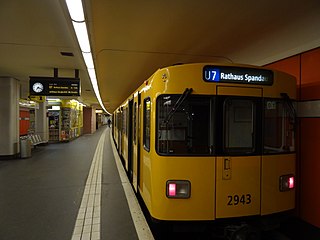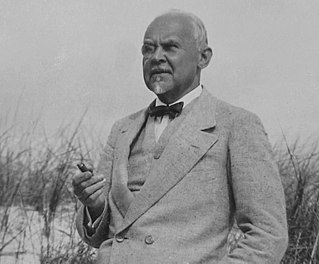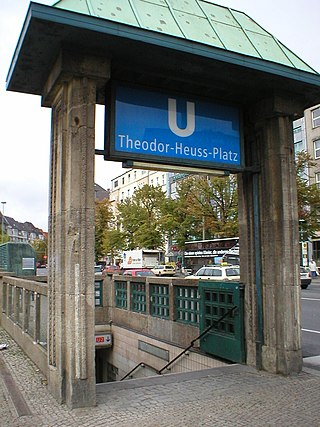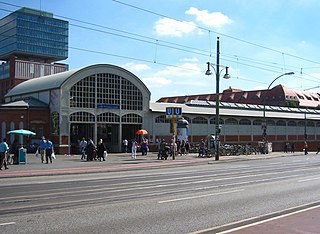History
After Werner von Siemens had presented the city fathers of Berlin, Schöneberg and Charlottenburg the elevated railway system several times in different variants, he received permission from the city of Berlin in 1895 to build an elevated railway from the Warschauer Brücke to Bülowstraße. In a second contract in the summer of 1896, Siemens agreed with Charlottenburg and Schöneberg to an extension of this route from Bülowstraße to the Zoological Garden. It was intended that at the former Auguste-Viktoria-Platz, today's Breitscheidplatz, an elevated railway system with a house passage should be created in order to not take the shine of the new building of the Kaiser Wilhelm Memorial Church. But soon these plans faced resistance in Charlottenburg. In 1897, the Charlottenburg city council announced that an extension beyond the Zoologischer Garten station would only be possible if the Charlottenburg area had been completely tunneled. Since the extension was definitely desirable and could save Siemens & Halske in this way the costly passage through the house, there was no objection from the company.
The station, originally designed by Alfred Grenander, opened on 14 December 1902 as the western terminus of the first U-Bahn line (Stammstrecke) to Warschauer Brücke. It was named Knie ("knee") after a curve there on the historic road between the cities of Berlin and Charlottenburg, the present-day Straße des 17. Juni. In 1906 it became a through station with the extension of the line toward Wilhelmplatz.
In 1953, the station and the eponymous square, a large roundabout, were renamed after the West Berlin mayor Ernst Reuter and extensively remodeled until 1959. It is mainly used by the students of the nearby Berlin Institute of Technology. [2]

The Berlin U-Bahn is a rapid transit system in Berlin, the capital and largest city of Germany, and a major part of the city's public transport system. Together with the S-Bahn, a network of suburban train lines, and a tram network that operates mostly in the eastern parts of the city, it serves as the main means of transport in the capital.

U1 is a line on the Berlin U-Bahn, which is 8.8 kilometres (5.5 mi) long and has 13 stations. Its traditional line designation was BII. It runs east–west and its eastern terminus is Warschauer Straße S-Bahn station where it connects to the Schlesische Bahn. From there it runs through Kreuzberg via Gleisdreieck and Wittenbergplatz on to the Kurfürstendamm.

U2 is a line of the Berlin U-Bahn. The U2 line starts at Pankow S-Bahn station, runs through the eastern city centre (Alexanderplatz) to Potsdamer Platz, the western city centre and finally to the Ruhleben terminal station.

The U4 is a line of the Berlin U-Bahn in Germany that is the shortest in Berlin's U-Bahn system, with a length of 2.86 kilometres (1.78 mi). Opened in 1910, the U4 serves five stations, all of which are step-free: it is also the only subway line in Berlin to have never been extended and the only one to have no night service on weekends.

The U7 is a rail line on the Berlin U-Bahn. It runs completely underground for a length of 31.8 kilometres (19.8 mi) through 40 stations and connects Spandau, via Neukölln, to Gropiusstadt and Rudow. The U7 was originally the south-eastern branch of the Nord-Süd-Bahn (U6) that ran between the branching point at Belle-Alliance-Straße (Mehringdamm) and Grenzallee; however, in the 1960s, this stretch was separated from the rest of the line and extended at each end to form a new line.

U3 is a line on the Berlin U-Bahn created in its current version on 7 May 2018.

Alfred Frederik Elias Grenander was a Swedish architect, who became one of the most prominent engineers during the first building period of the Berlin U-Bahn network in the early twentieth century.

Gleisdreieck is an elevated Berlin U-Bahn station located on a viaduct in the Kreuzberg district, and served by lines U1, U2, and U3. The U1/U3 platform is at a higher level than, and perpendicular to, that of the U2.

Deutsche Oper is a station of the Berlin U-Bahn on line U2, located in the Charlottenburg district. It is named after the Deutsche Oper Berlin.

Bismarckstraße is a Berlin U-Bahn station on lines U2 and U7, located in the Charlottenburg district. It was opened in 1978 on the eponymous street, a major arterial road named after Otto von Bismarck.

Theodor-Heuss-Platz is a station on line U2 of the Berlin U-Bahn, located in the Westend district.

Nollendorfplatz is a square in the central Schöneberg district of Berlin, Germany.

Warschauer Straße is the eastern terminus station of lines U1 and U3 of the Berlin U-Bahn.

Richard-Wagner-Platz is a Berlin U-Bahn station located on the U7 in the Charlottenburg district.

Stralauer Tor was a Berlin U-Bahn station in Berlin-Friedrichshain. It operated between Warschauer Straße and Schlesisches Tor stations on today's U1. Following its destruction in World War II it was never rebuilt and is one of three Berlin U-Bahn stations to have been abandoned after having previously been in service.

Berlin Potsdamer Platz is a railway station in Berlin. It is completely underground and situated under Potsdamer Platz in central Berlin. Regional and S-Bahn services call at the station, and it is also served by U-Bahn line U2.

Bus transport is the oldest public transport service in Berlin, the capital city of Germany, having been introduced in 1846. Since 1929, services have been operated by the Berlin Transport Company, although during the Cold War-era division of the city they operated in West Berlin only. In East Berlin the public transport agency split off from the BVG and rebranded as BVB, operating the busses in the soviet sector of Berlin.
The following is a timeline of the history of the city of Berlin, Germany.

The Berlin U-Bahn originated in 1880 with Werner Siemens' idea to build an urban railway in Berlin. During the nine years after the German Empire was founded, the city's population grew by over one-third and traffic problems increased. In 1896, Siemens & Halske began to construct the first stretch of overhead railway. On 1 April 1897, the company began construction of an electric underground railway. The Berliner Verkehrs Aktiengesellschaft (BVG) was formed in 1928, and took over further construction and operation of the network. In 1938, the company was renamed Berlin Transport Company; the original acronym, however, remained. Since 1994, the BVG has been a public company.
The tracks of the Berlin subway are lines operated in the line traffic, operating distances, which serve only internal purposes, turn-off and turning plants and plants in the operating farms.























